
KPM Berlin: Production of exquisite porcelain with a 250-year history
KPM Berlin (Königliche Porzellan-Manufaktur in Berlin) is a renowned brand established since 1763. It was founded by King Frederick II of Prussia, who acquired a small Berlin factory that had opened twelve years earlier. Since then, the symbol of KPM Berlin has been the cobalt-blue royal scepter, well-known to connoisseurs of German porcelain. The full name of the production is Königliche Porzellan-Manufaktur Berlin.
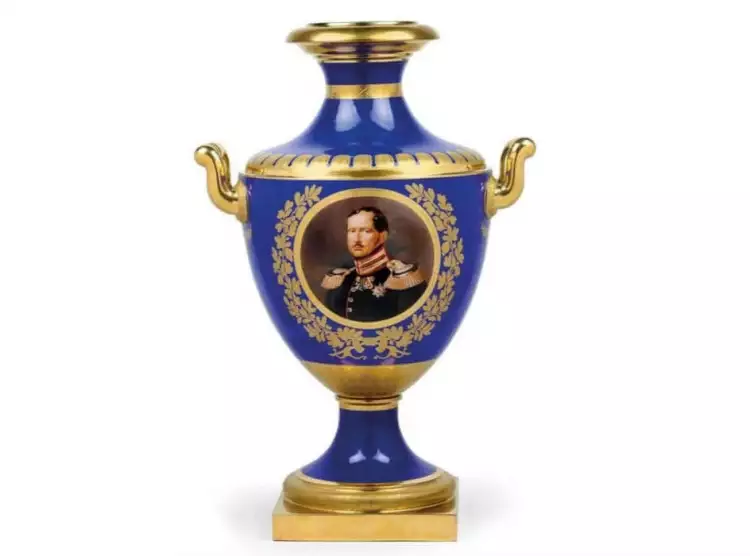 KPM Berlin. Imperial vase depicting William III, 1840
KPM Berlin. Imperial vase depicting William III, 1840
KPM Berlin has been operating for over 250 years, still located in the historical center of the city. The factory is famous for its premium-class hand-painted porcelain items. It is a coveted acquisition for collectors and enthusiasts of fine objects.
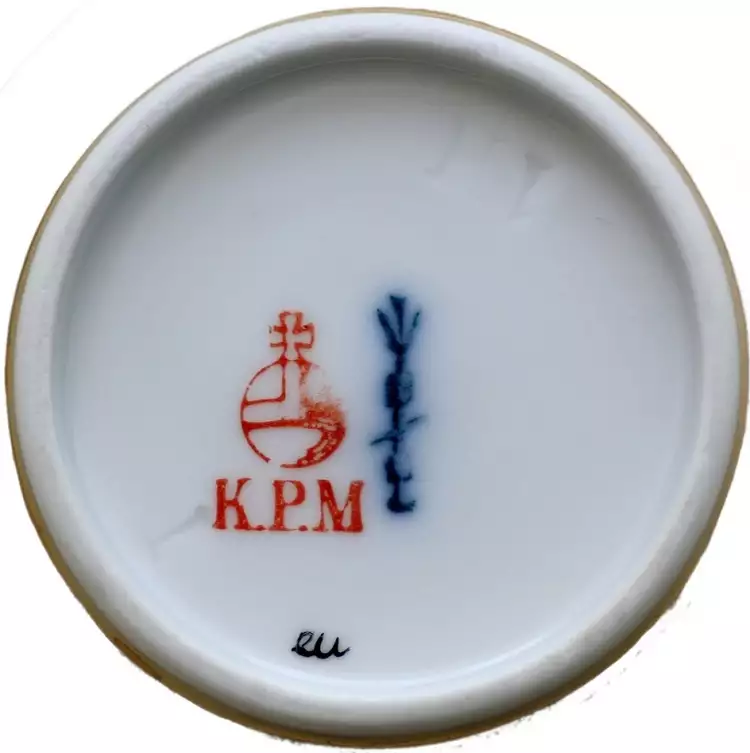 KPM Berlin. Underglaze stamps on a piece from 1841
KPM Berlin. Underglaze stamps on a piece from 1841
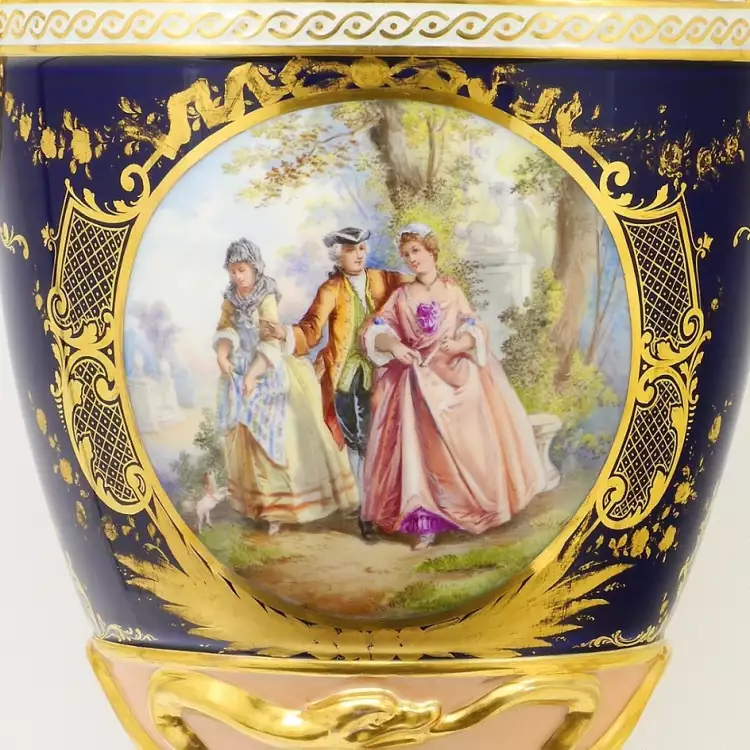 KPM Berlin. Vase with painting on Watteau's subject, 1885
KPM Berlin. Vase with painting on Watteau's subject, 1885
History of the KPM Berlin Manufactory
KPM Berlin had a predecessor - a company founded in 1751 by Wilhelm Caspar Wegely. The Seven Years' War, which engulfed almost all of Europe and many other countries, led to the closure of the factory. This large-scale conflict involved the colonial interests of the major European powers. Prussia belonged to the coalition of victors and solidified its status as one of the leading European countries but was greatly exhausted.
By the end of the war, the enterprise was attempted to be revived by the merchant Johann Ernst Gotzkowsky. He acquired the surviving equipment and production secrets, hired experienced artists and potters, many of whom had previously worked at the Meissen Manufactory. They produced porcelain of exceptional artistic and technical quality. However, the economic crisis of 1763 led Gotzkowsky to bankruptcy.
Frederick II decided to take control of the manufactory and bought it. To ensure the success of the enterprise, the king prohibited the import of foreign porcelain and began regularly ordering luxurious tableware himself. Over 20 services were crafted for him, many of which included more than 450 items. The tableware was decorated in the Rococo style, with designs often tailored to the interior of specific castles. In 1772, Catherine II received a dessert set as a gift, manufactured at this factory.
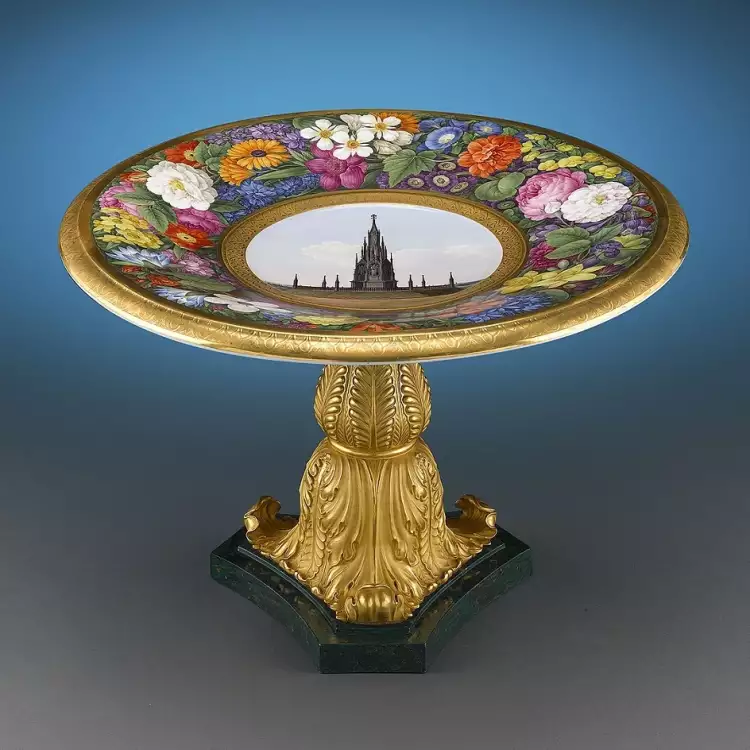 KPM Berlin. Gift from Friedrich Wilhelm III to Pope Pius VII, circa 1823
KPM Berlin. Gift from Friedrich Wilhelm III to Pope Pius VII, circa 1823
With the king's involvement, the production constantly evolved and became more intricate. In 1784, after four years of work, a special shade of blue called "Bleu Morant" was developed. In 1790, by order of the Duke of Courland, a luxurious "Courland" service was created in the neoclassical style. The form with angular handles became very popular and continues to be produced to this day. A few years later, the first steam engine in the country was introduced to the production process.
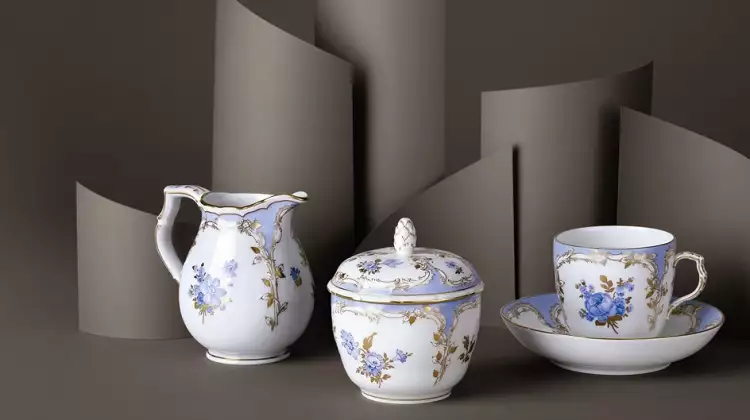 KPM Berlin. Painted in the colour Blue Morant
KPM Berlin. Painted in the colour Blue Morant
In the 18th century, KPM Berlin continued to produce items of excellent quality, including decorative painted plates, tea sets, vases, and figurines. New colors based on chromium oxide and iridium were introduced. The palette became so diverse that the painting could rival oil painting. Noteworthy are the tea set for Josephine Bonaparte with a floral pattern and gift services for commanders who fought against Napoleon.
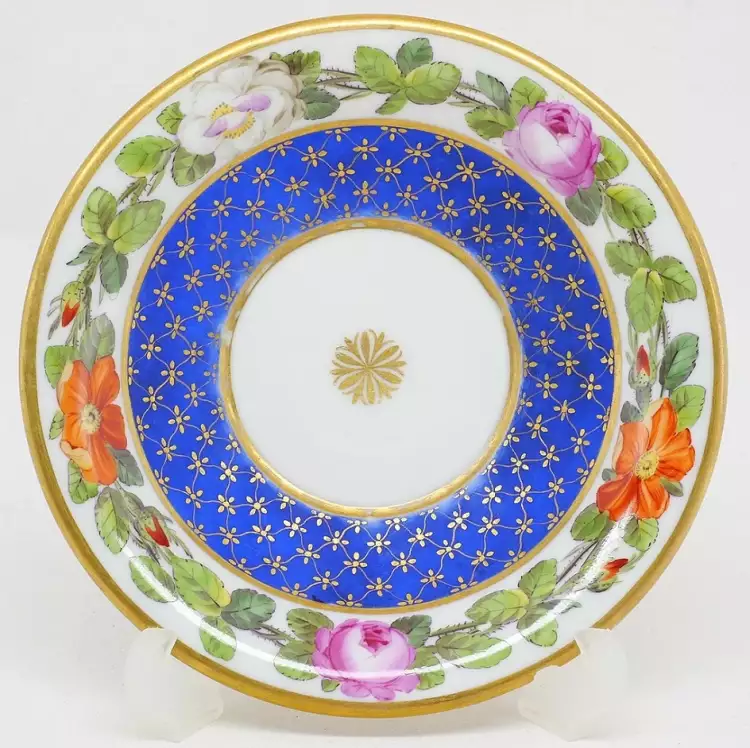 KPM Berlin. Decorative plate, circa 1820
KPM Berlin. Decorative plate, circa 1820
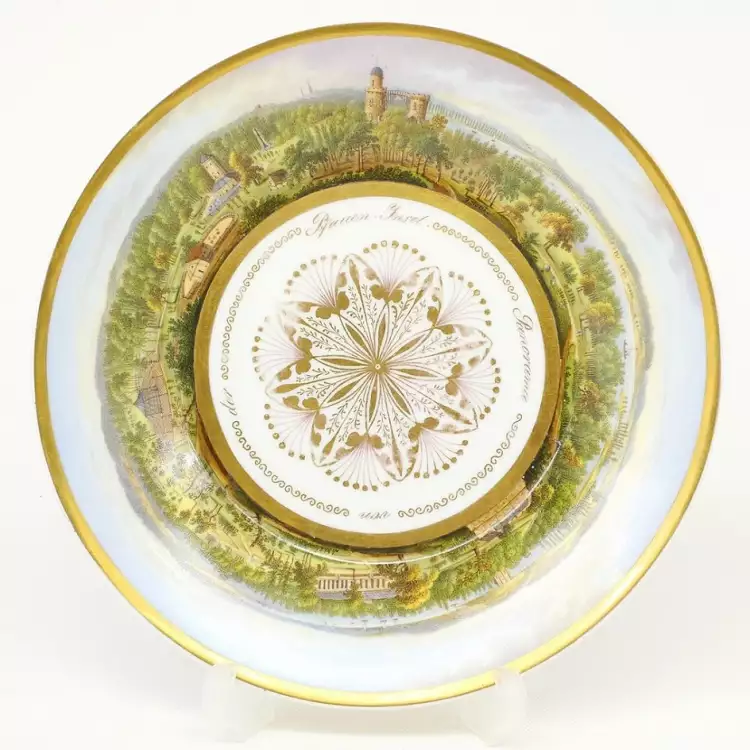 KPM Berlin. Plate with panoramic painting, 1830
KPM Berlin. Plate with panoramic painting, 1830
In 1871, the factory was modernized and equipped with new kilns, which operated for over 90 years. At the end of the 18th century, Hermann Seger made a significant contribution to the development of the manufactory. Under his leadership, a research laboratory was established, and new types of glaze and soft porcelain were developed. The Art Nouveau style was prominently featured in the designs. A notable masterpiece from this era was the Ceres tableware, created in 1912.
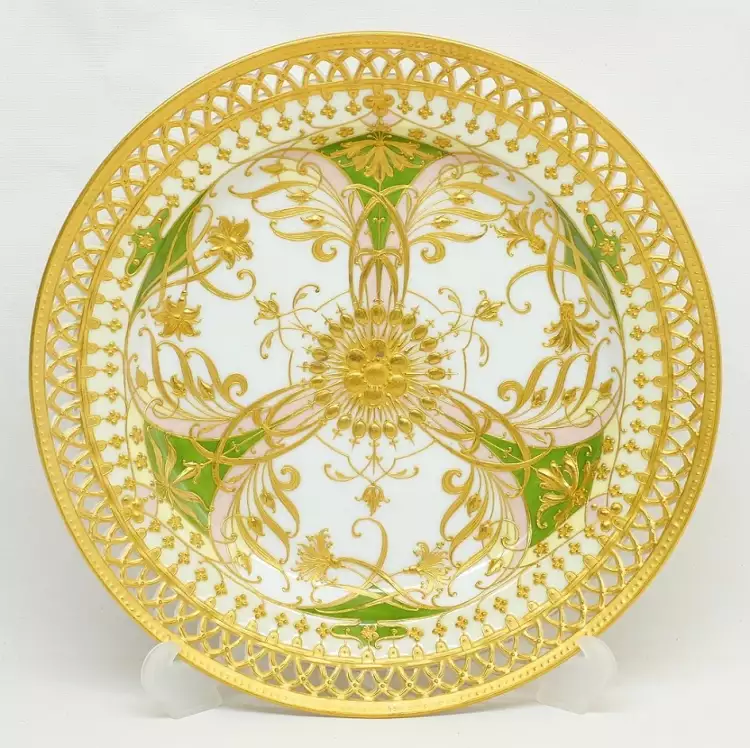 KPM Berlin. Decorative plate with gold decoration, 1901
KPM Berlin. Decorative plate with gold decoration, 1901
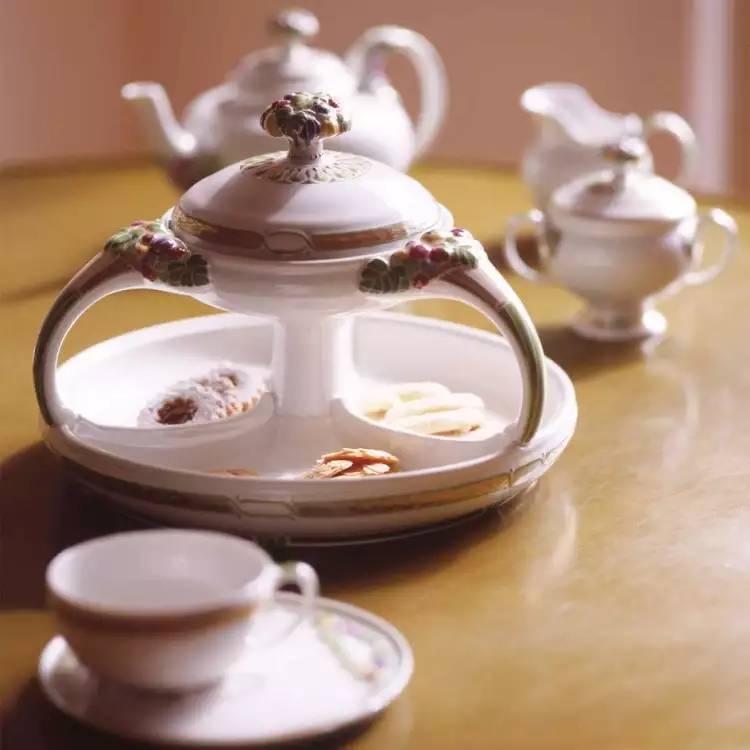 KPM Berlin. Ceres service, 1912
KPM Berlin. Ceres service, 1912
KPM Berlin: 20th Century and Present Times
Until 1918, the production remained royal property, and after that, it came under state ownership. It was renamed the State Porcelain Manufactory (Staatliche Porzellan-Manufaktur) while retaining the KPM brand. In terms of art, the beginning of the 20th century was marked by collaboration with Bauhaus artists, who created the "Urbino" service in 1931. It received the Grand Prix at the World Exhibition in Paris. It is a true anthem to functionality. For instance, the overturned lid of a soup tureen transforms into a vase.
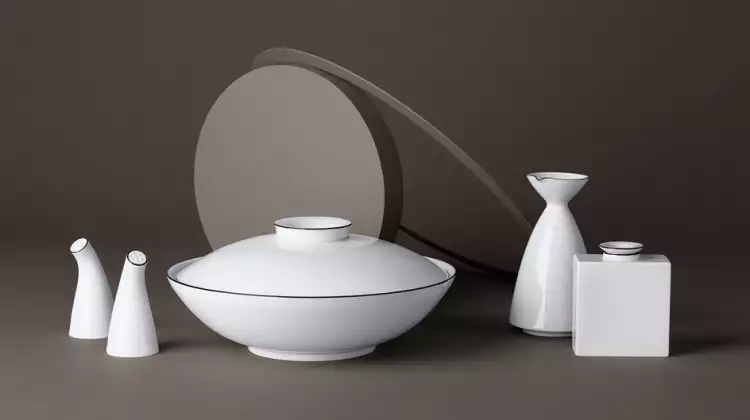 KPM Berlin. URBINO service by Trude Petri, designed in 1931
KPM Berlin. URBINO service by Trude Petri, designed in 1931
In the late 1930s, in honor of its 175th anniversary, the Arkadia form was developed. It was adorned with scenes from Greek mythology or images of meadow flowers. During World War II, production was relocated to another city, but in 1956, it returned to its original location. In 1988, it celebrated its 225th anniversary and was once again named the Royal Porcelain Manufactory.
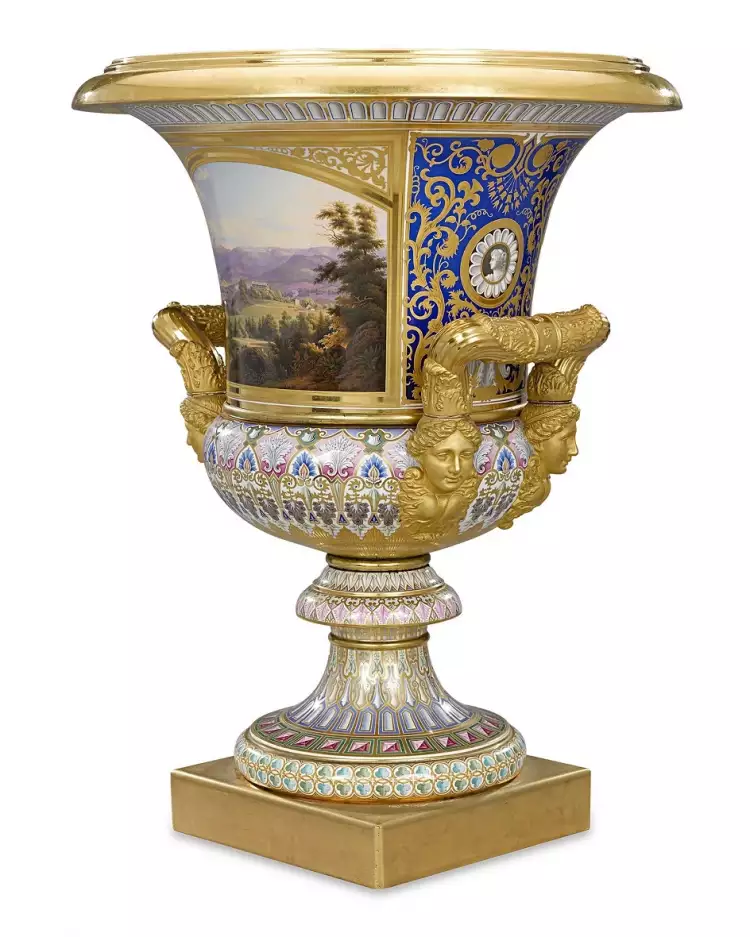 KPM Berlin. Gift vase for Friedrich Wilhelm IV's sister Alexandrine, circa 1851
KPM Berlin. Gift vase for Friedrich Wilhelm IV's sister Alexandrine, circa 1851
At the beginning of the 21st century, the factory underwent renovation and obtained the status of a cultural heritage monument. Currently, 170 craftsmen work there, continuing to create porcelain in the luxury segment. This includes the finest pieces designed throughout the history of the manufactory. One can purchase tableware in Rococo, Neoclassical, Modern, and Postmodern styles. In 2013, on the occasion of its 250th anniversary, new designs emerged: Kurland Blanc Nouveau and Kurland Royal Noir.
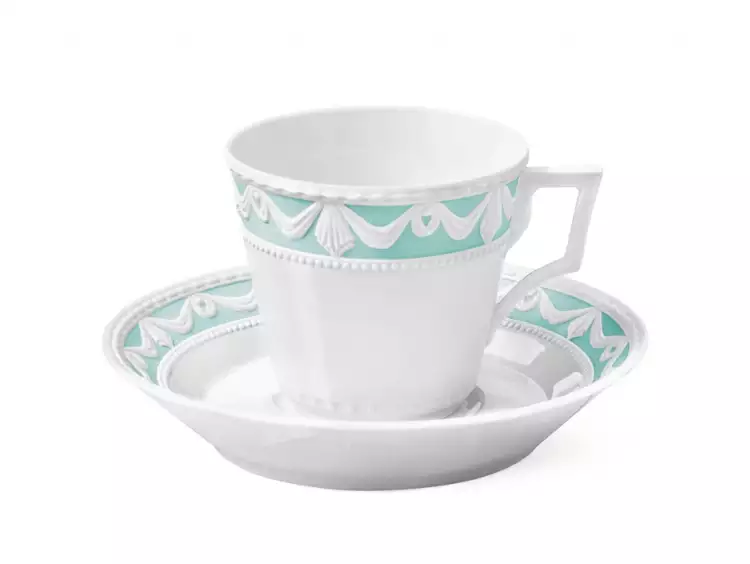 KPM Berlin. Kurland Blanc Nouveau service
KPM Berlin. Kurland Blanc Nouveau service
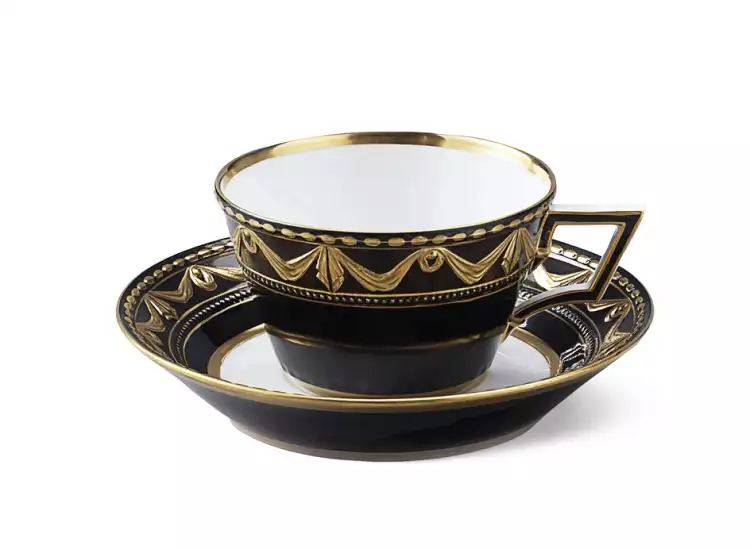 KPM Berlin. Kurland Royal Noir service
KPM Berlin. Kurland Royal Noir service
Antique hand-painted porcelain is a valuable acquisition for collectors. Searching for and purchasing such items is convenient on the Very Important Lot website. Explore our auction catalog to not miss out on anything interesting!

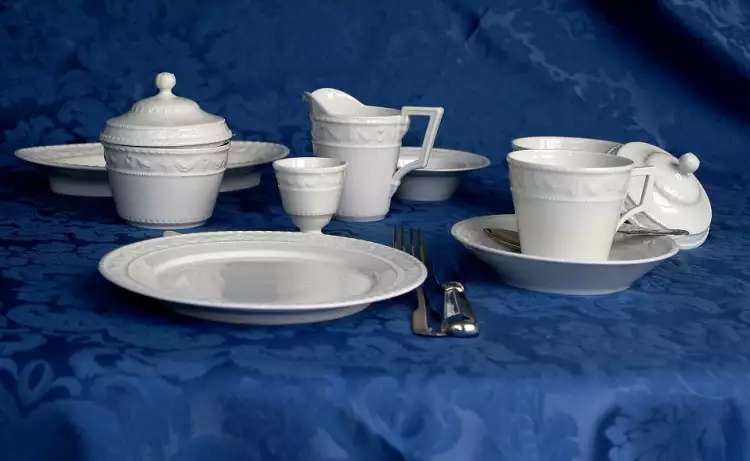
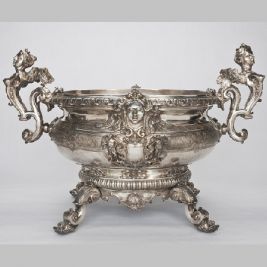 English Silver Tableware - History, Fashion, and Styles
English Silver Tableware - History, Fashion, and Styles  Birmingham silver - the beauty and elegance of small forms
Birmingham silver - the beauty and elegance of small forms 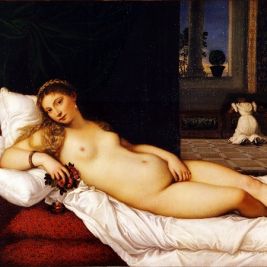 Genre of Nude in Painting: Evolution and Historical Trends of the Nude Style
Genre of Nude in Painting: Evolution and Historical Trends of the Nude Style 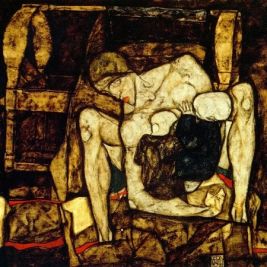 The painting "The Blind Mother" by Egon Schiele is a reflection of the artist's complex relationship with his own mother
The painting "The Blind Mother" by Egon Schiele is a reflection of the artist's complex relationship with his own mother 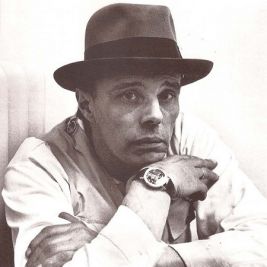 Joseph Beuys - Biography and "shamanic," mystical works of a great master
Joseph Beuys - Biography and "shamanic," mystical works of a great master 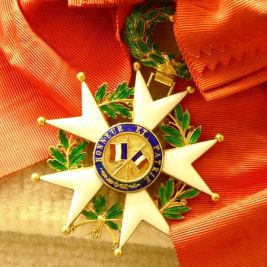 The National Order of the Legion of Honour
The National Order of the Legion of Honour  Still life is a genre of painting that perfectly reflects the artist's inner universe
Still life is a genre of painting that perfectly reflects the artist's inner universe  The paintings "Bedroom in Arles" by Vincent van Gogh are iconic works of a brilliant master
The paintings "Bedroom in Arles" by Vincent van Gogh are iconic works of a brilliant master 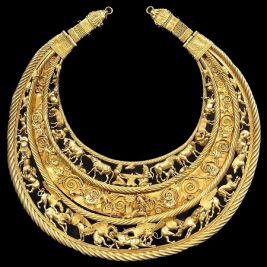 Jewelry craftsmanship - an ancient art of creating unique masterpieces from precious materials
Jewelry craftsmanship - an ancient art of creating unique masterpieces from precious materials 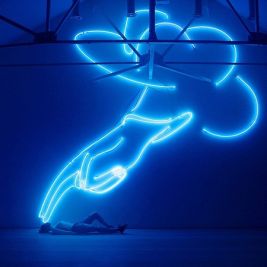 Installation - the modern art of striking three-dimensional compositions
Installation - the modern art of striking three-dimensional compositions